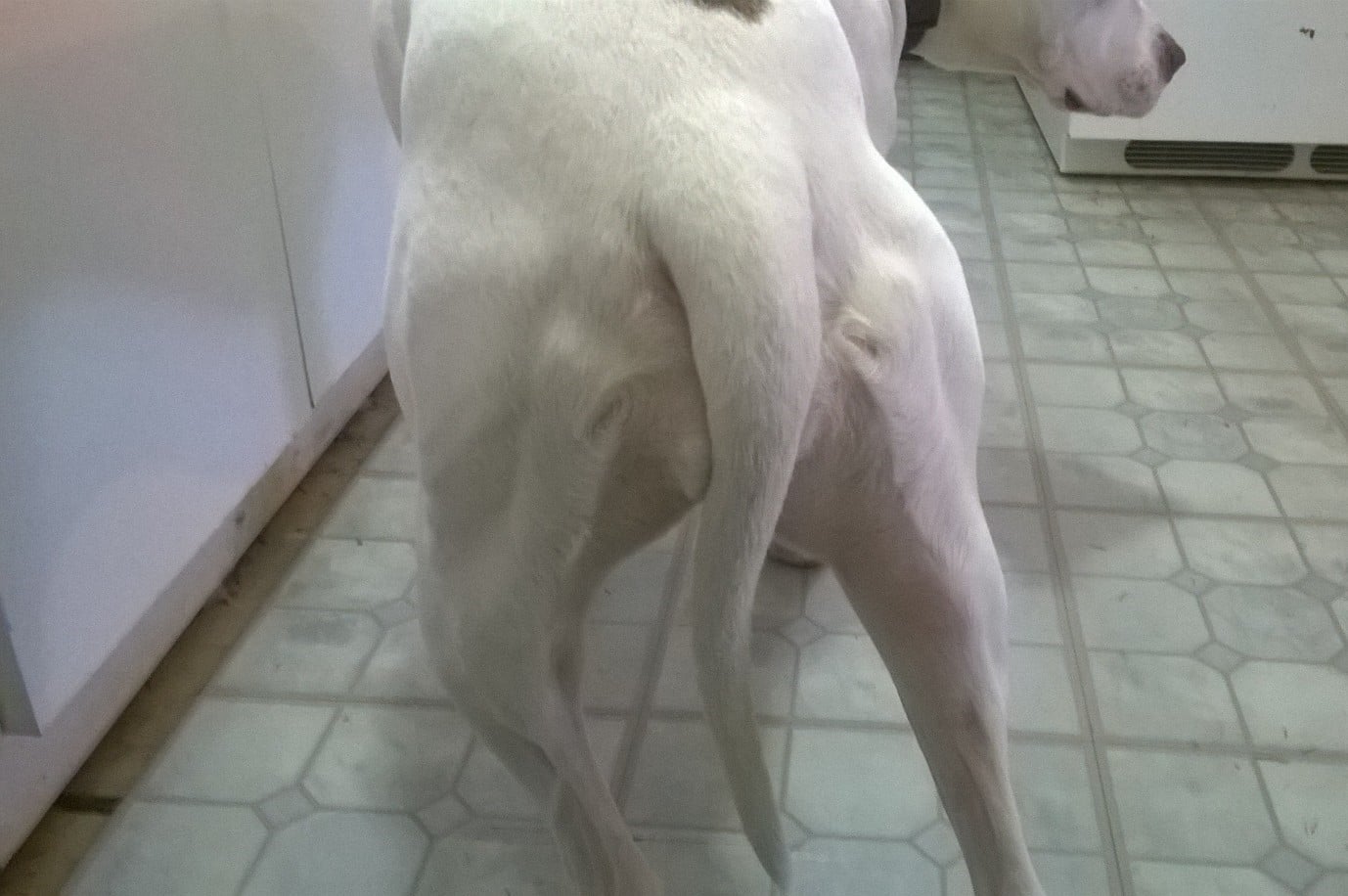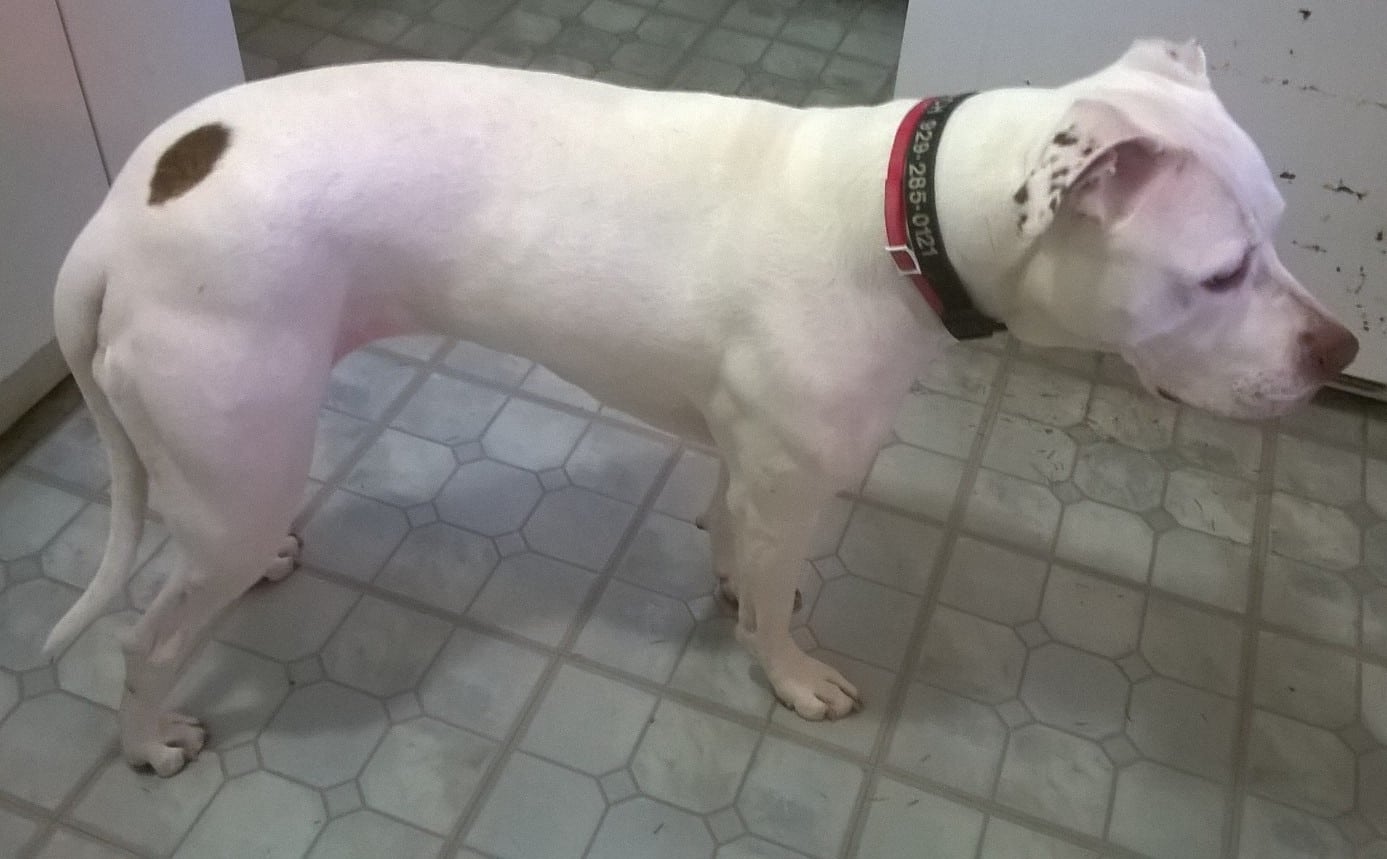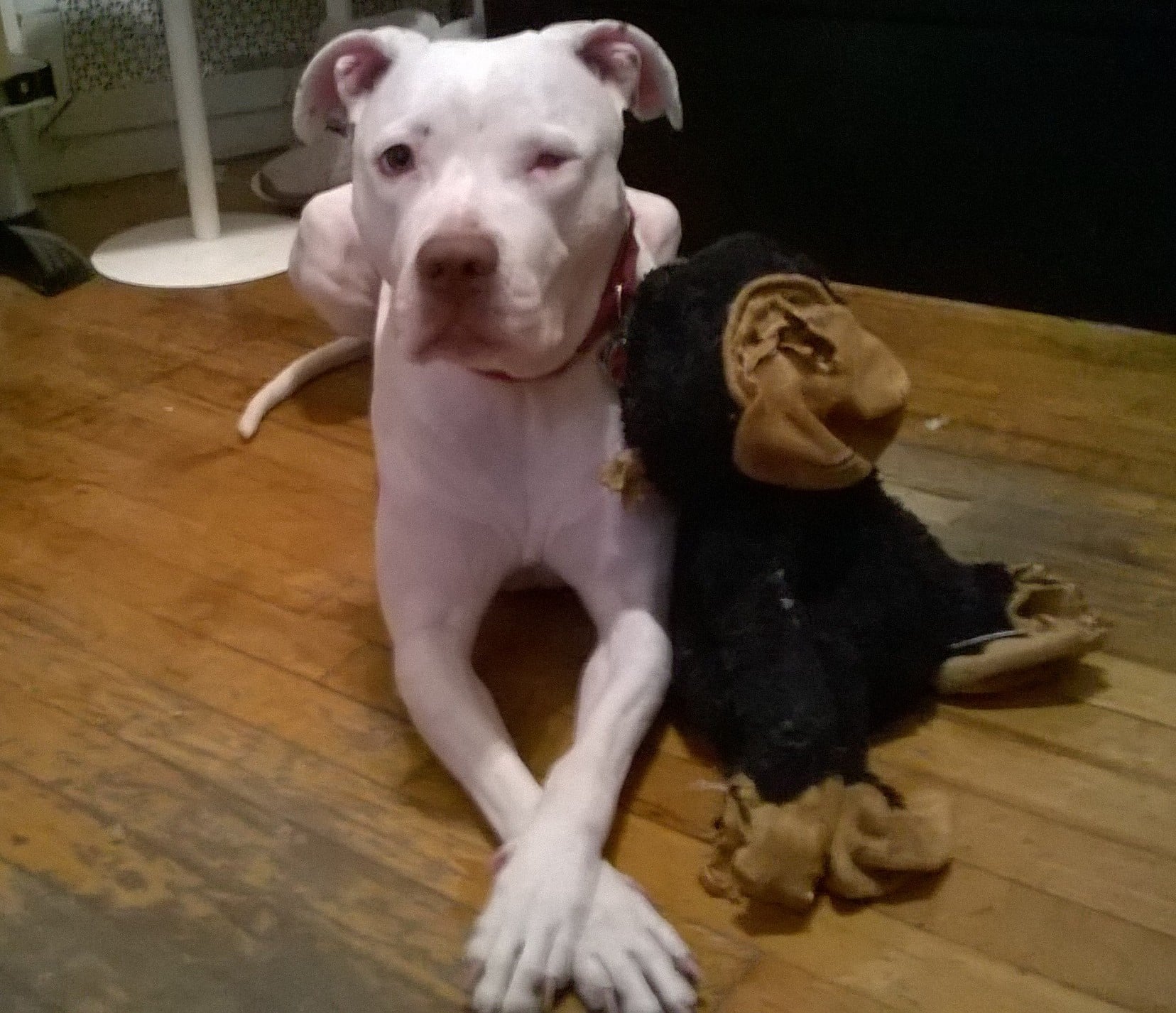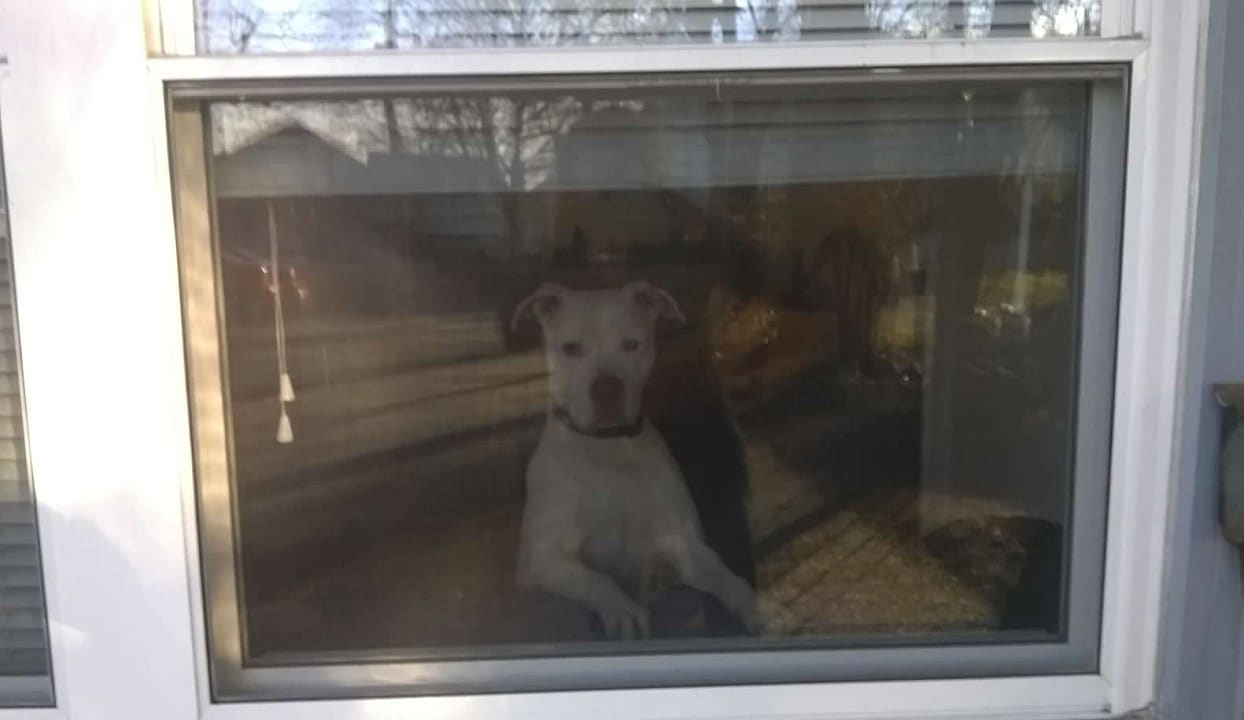My pit bull Bunch is a very, very, very sensitive dog (feel free to add a few more “verys”). She’s a rescue from the streets of New York City, so there’s no way of knowing what she experienced during her first two years. Of course, you can have a very sensitive dog who wasn’t subjected to the noises and abuses of a big city, even a purebred you’ve had since she was a pup who experienced all the luxuries of a good breeder. These sensitivities can seem to come of nowhere. But, one thing’s for sure — if you have a super sensitive dog, you know it.
Bunch is a sweetheart. But dealing with what can sometimes seem to me to be ambiguous sensitivities can actually get frustrating. And that’s a big question — are the sources of the anxiety definable, obviously one of the first things you’ll ask yourself. Loud trucks are one of Bunch’s instigators. The beeping of a truck backing up is another. She sure as heck doesn’t like skateboarders. Even the sudden movement of a box being blown in the wind can make her uncomfortable.
If I focus on Bunch’s tail in these, and other, situations, I can tell very well what level her anxiety is. The tail all the way between the legs is a sign of extreme anxiety.
As the tail relaxes or “goes up,” the anxiety is going down. Every dog has a “normal” level for their tail — it varies on the type and breed.
There are lots of other physical signs if you have, perhaps, a dog with a docked tail (for instance, it can be common for adopted pit bulls to have had their tails docked by previous fighting-oriented owners). Ears are very significant tellers of what a dog is going through emotionally. The position of the head (lowered head can signify anxiety, raised head more confidence) is also a signifier.
I have tried to avoid situations that cause Bunch anxiety but we know that’s not the best solution if it could be done. And, sometimes, Bunch hears or sees or feels something that I don’t. Wrestling the phantom fiends as it were.
Tips and tricks
You may find, like I have, that the fiends have to be wrestled over and over again. I have not found a “cure” for super sensitive Bunch, but these are some helpful tricks.
Routine: It can be tough to keep up a routine. At the minimum, regular waking up, feeding and walking times need to be consistent. If our routine changes, among many other things, we are back at the beginning. I do a schedule every Sunday. This helps me see what deviants there may be from our regular routine that week and try to work around them.
Just as important as keeping a routine is Basic Training. And, your dog needs to obey these commands without the temptation of treats. Crazy, eh? But it can be done. How can your dog gain confidence if you’re not confident and responsible yourself? It’s been done to the death, the “Sit,” “Stay,” “Heal” commands but, by Jove, they really are reassuring building blocks.
After reworking the basics, you want to go with “desensitization” where you expose your dog to a stimulus a bit at a time to help her get used to it. A great way to have control over this is to use recordings of sounds you have found that seem to upset your dog. You can do this in a controlled situation, such as in your home, to start the process.
Avoid keeping your dog in anxiety-provoking situations for long, though. The popular limitation of 15 minutes for training dogs (because they lose their attention after that ) should be lowered to a few minutes which can be built on over time.
Never (!) pull your dog out of a tight spot where she’s hiding because of her anxiety. Try, instead, to block off hiding spaces such as closing bathroom doors.
When we first moved to New Paltz, NY, Bunch decided that the very small closet in the bathroom was a protective place. Not a good idea.
That said, do give your dog a den of her own, one spot where you’ve said it’s O.K. to go to to feel safe.
And favorite toys can be very helpful in lessening anxiety. Think about your own favorites when you were young — the rabbit or the blankie or the firetruck. Keeping this toy in your dog’s den is a good idea or you might try keeping it out of reach and giving it to your dog in moments of high anxiety (I’ve done this with Bunch and it does help her).
Never coddle your dog. It’s not something she understands except as a way of getting attention. In fact, ignoring your dog when she’s shaking or such is very useful. Do a test — when Bunch is shaking and looking for attention because she is anxious, I watch her for a second. Then I disappear around a corner and watch her from there. She stops. I’ve also found that if I leave the apartment for awhile (I spend way too much time at home), Bunch is very confident when I return.
This leads to another thought — are my anxieties affecting Bunch’s sensitiveness? Very likely. Working on my own sensitivities and anxiety has definitely helped some (or me that means exercising often and working on meditating).
Super sensitive dogs don’t have to live very sheltered lives. It’s up to us to help them feel confident about themselves and to be confident about our part in their lives.
The post Living with a Super Sensitive Dog appeared first on Dogster.






No comments:
Post a Comment